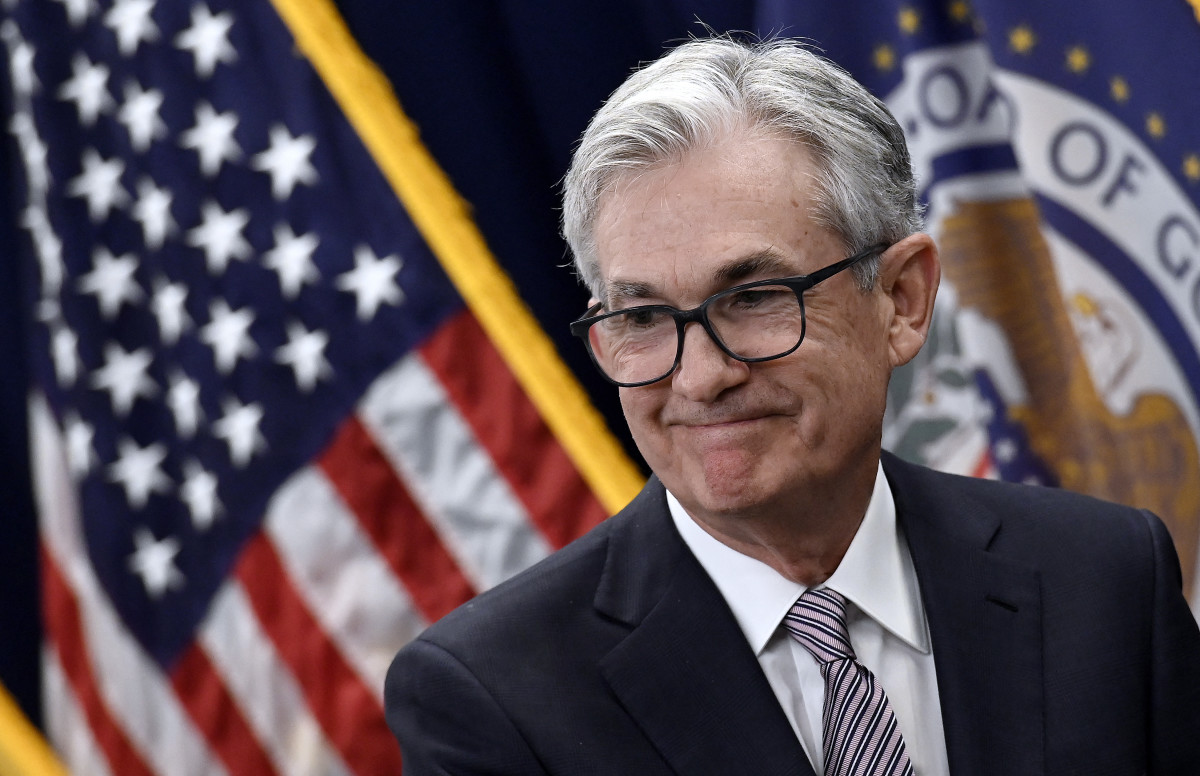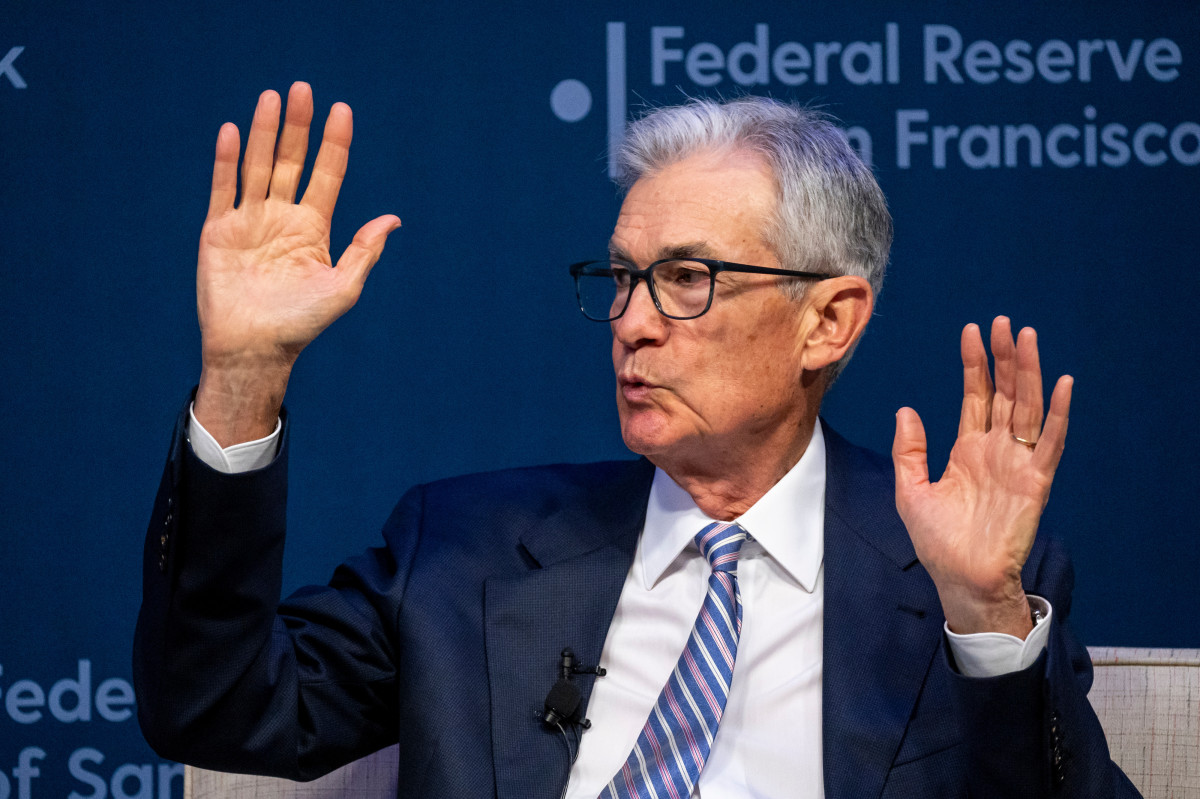
Federal Reserve Chairman Jerome Powell is tasked with a unique and sharply difficult challenge in American public life: talking about the success of the U.S. economy while simultaneously apologizing for it.
The Fed has a twin mandate, to deliver some sort of mythical ideal called "price stability," aligned with an equally ephemeral notion of "full employment" while playing its informal role as the flag-bearer for bullishness on Wall Street.
Powell's odd tone, reflecting both sides of that mandate, was in stark evidence earlier this week during a speech in Washington.
In his last public appearance before the Fed's next policy meeting later this month, Powell seemed pained to note that faster inflation, tied to a stronger domestic economy, would likely mean higher lending rates into the summer and beyond.
"Right now, given the strength of the labor market and progress on inflation so far, it's appropriate to allow restrictive policy further time to work and let the data and the evolving outlook guide us," Powell told an audience of economists, in full knowledge that he actually was speaking to investors on Wall Street and beyond.

Fed Vice Chairman Philip Jefferson was even more succinct, spelling out the likely path for rates and the economy in a separate event at the International Research Forum on Monetary Policy in Washington.
"My baseline outlook continues to be that inflation will decline further, with the policy rate held steady at its current level, and that the labor market will remain strong, with labor demand and supply continuing to rebalance," he said.
For traders, September is the new June
Traders reacted as you would fully expect, by dumping U.S. Treasury bonds — sending their yields sharply higher — and paring bets on any Fed interest-rate cuts until at least September, according to the CME Group's FedWatch.
Benchmark 10-year Treasury note yields, in fact, tested the 4.7% mark, a level seen less than a handful of times since the global financial crisis, while 2-year notes briefly topped 5%, a level more than 3.7 times higher than the current dividend yield on the S&P 500.
Powell's palpable disappointment in pivoting, yet again, away from near-term rate cuts is much less a function of any great policy error and more a reflection of the reality of his position: Markets and investors key on his commentary in a far more visceral way than the general public does, even though the Fed's mandate is meant to serve the latter rather than the former.
Related: Retail sales surge as spending boosts GDP bets and tests Fed rate cut timing
But markets appear to be coming around to the idea, however reluctantly, that their own rate-cut forecasts no longer apply when the economy added 840,000 new jobs over the past three months, manufacturing activity is quietly improving, and consumers are happy to spend more than $700 billion each month even as they face higher food and energy prices.
In fact, the prior focus on a so-called soft landing from the Fed, where it tames inflation through rate hikes without triggering a recession, then eases rates to stimulate modest growth, has been largely replaced with a new thesis: The economy doesn't need rate cuts at all.
'No Landing' interest-rate bets are accelerating
"The Fed has a free pass to sit on rates longer while the labor market remains strong, consumption is unaffected, and the typical consequences of hiking rates quickly aren’t apparent in the economy," said Jamie Cox, managing partner for Harris Financial Group in Richmond, Va.
"Markets need to focus on the fact that rates are sufficiently restrictive, instead of how many cuts are in the pipeline," he added.
Bank of America's closely tracked Global Fund Managers' Survey, published Wednesday, reflects that view, with around 36% of respondents seeing "no landing" for the U.S. economy, with expectations for solid growth and elevated inflation, up from just 7% in January.
Inflation, in fact, remains the survey's biggest "tail risk," topping geopolitical concern and spiking oil prices, suggesting that investors aren't expecting rate cuts in that kind of environment.
Related: Hot inflation report batters stocks; here's what happens next
Growth prospects, too, are improving, with the Atlanta Fed's GDPNow forecasting tool indicating a current-quarter advance of 2.9%. The first-quarter estimate is likely to come in well above 2% following the stronger-than-expected retail-sales figures from March.
How all this translates to stocks remains a key market question and largely reflects Wall Street's recent pullback, which has seen the S&P 500 give back nearly 4% of its year-to-date gains over the past three weeks.
"The tensions in the Middle East look contained for now, but we see risks of further escalation," said BlackRock's global chief investment strategist, Wei Li. "We could face elevated oil and commodity prices for longer, reinforcing the new regime of higher inflation and our long-held view that we are in a higher-for-longer interest-rate environment."
Israel's likely response to Iran's weekend missile attack, and its implications for a wider military conflict in the region, looms large, as does the outcome of the first-quarter earnings season, which kicks into high-gear next week with updates from Meta Platforms (META) , Tesla (TSLA) , Alphabet (GOOG) and Amazon (AMZN) .
Q1 earnings season in focus
At present, analysts see first-quarter earnings rising 2.7% from a year earlier to a share-weighted $447.3 billion, with second quarter profits improving to $494.7 billion.
Full-year earnings growth, according to LSEG data, is forecast at 9.2% this year and 14.4% next year, although much will depend on near- and longer-term outlooks from the Magnificent 7 tech stocks.
Ian Shepherdson of Pantheon Macroeconomics, however, sees a change to the Fed's "higher for longer" rate narrative coming first from a weakening labor market and improving inflation data.
More Economic Analysis:
- Watch out for 8% mortgage rates
- Hot inflation report batters stocks; here's what happens next
- Inflation report will disappoint markets (and the Fed)
"For the record, we think delaying rate cuts is a mistake, and the risk of an unwanted recession is rising," he said. "But we don’t have our hands on the policy levers."
The men and women who do, however, have been very consistent in their recent messaging, and they've taken great pains to convince the broader financial markets that they mean what they say, with Powell adding a sharper dimension to that outlook on Wednesday.
"Powell moved more decidedly in a hawkish direction and made it clear — compared to his more ambiguous stance regarding a rate-easing timetable — that the 'higher for longer' narrative remains intact," said LPL Financial's chief global strategist, Quincy Krosby.
"This was unfriendly for equity markets, but markets got the message," she added.
Related: Veteran fund manager picks favorite stocks for 2024







